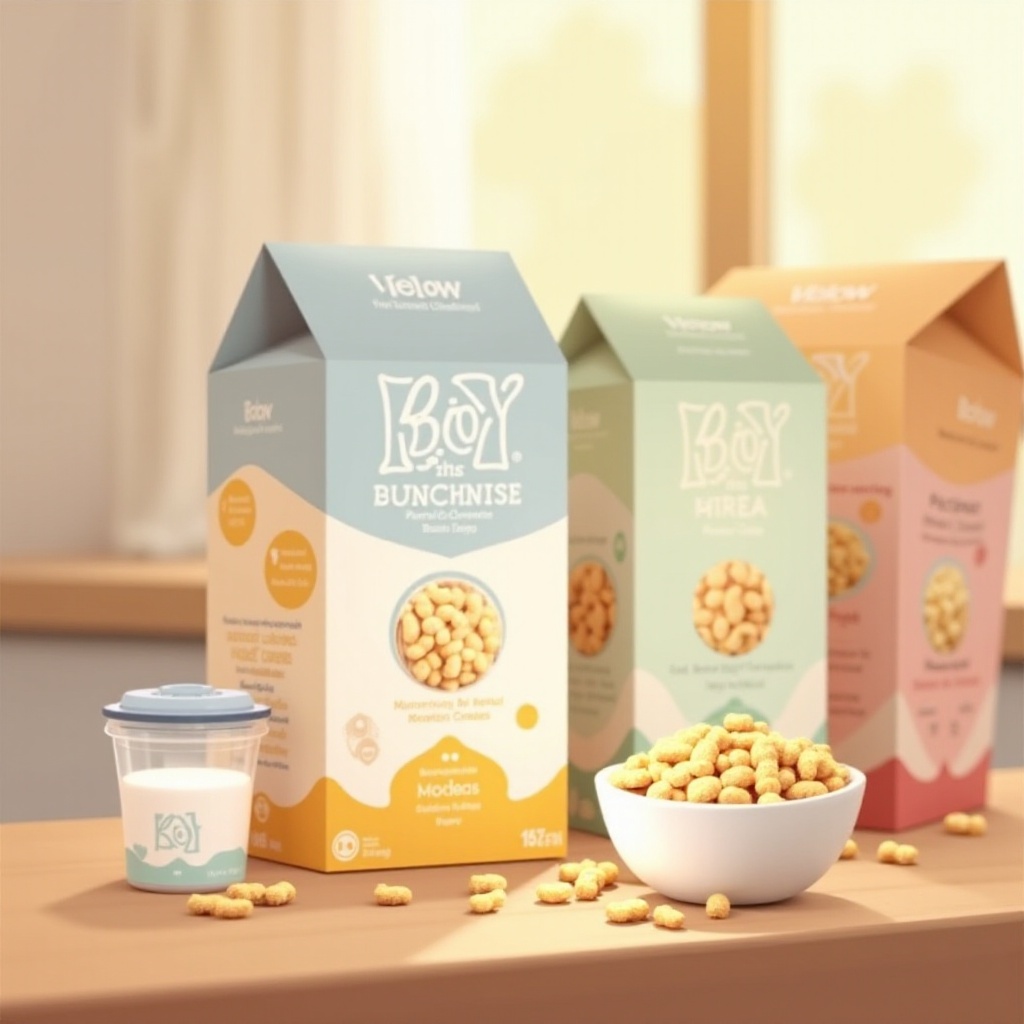Introduction
Mixing cereal with baby formula is a trusted practice for parents eager to enhance their infant’s diet with solid foods. The endeavor involves combining cereals with formula to create a balance of nutrients essential for growth. Picking the right blend is vital as babies transition from milk to solids. This comprehensive guide discusses the benefits, variations, and processes of mixing cereal with formula, aiming to support a healthy start for your baby.

Understanding Baby Formula and Cereal
Baby formulas are crafted to offer complete nutrition to infants who require an alternative to breastfeeding. Rich in vital vitamins and minerals, formulas lay the groundwork for healthy development. Baby cereals, such as rice, oatmeal, and multigrain, serve as introductory solid foods, each bringing varied nutritional advantages. A grasp of these distinctions aids parents in selecting effective cereal-formula mixes to ensure a balanced nutrient intake that caters to their baby’s culinary journey.
The transition from milk to solids marks an exciting developmental stage. By blending cereal with formula, parents are able to create a feeding experience that is both nutritious and enjoyable. This combination allows babies to acclimate to varied textures and flavors, paving the way for imminent dietary shifts.
Benefits of Mixing Cereal with Formula
Integrating cereal with formula provides numerous advantages:
- Nutritional Harmony: Offers essential carbohydrates, proteins, vitamins, and minerals.
- Enhanced Digestion: Certain cereals promote smoother digestive processes, especially for infants susceptible to gassiness.
- Gradual Transition to Solids: Encourages familiarity with new food textures.
- Customized Consistency: Parents can adjust the thickness to accommodate the baby’s preferences.
- Flavor Enhancement: Improves cereal taste, aiding acceptance by infants.
Understanding these benefits enables parents to wisely choose cereal-formula mixes, fostering healthy eating routines. By gradually exposing infants to solid food textures juxtaposed with the familiarity of formula, parents can facilitate both their babies’ physical and cognitive growth.
Top Baby Cereals for Mixing with Formula
Selecting the ideal cereal is pivotal. Consider these popular options:
- Rice Cereal: Renowned for its mild flavor and smooth texture, rice cereal frequently serves as the initial solid food for many infants.
- Oatmeal Cereal: Provides more fiber than rice and aids in constipation prevention, delivering a subtle nutty essence.
- Multigrain Cereal: A fusion of grains offering a broad nutrient range, perfect for babies who have adjusted to single-grain cereals.
Each cereal variant brings distinct benefits, guiding parents in accordance with their baby’s nutritional requirements and readiness for diverse textures. This gradual incorporation of cereal promotes the development of varied eating habits from an early stage.

How to Mix Cereal with Formula
Mixing cereal with formula necessitates careful preparation approaches:
- Begin Small: Start with a tablespoon of cereal, blending with enough formula to achieve a desired consistency.
- Gradually Increase Thickness: Slowly amplify the cereal portion as your baby acclimates.
- Observe Reactions: Assess any allergic or digestive responses upon introducing cereals.
- Temperature Tailoring: Warm the formula slightly if preferred by the baby for a cozier feeding experience.
- Seek Professional Advice: Engage a pediatrician concerning dietary needs or intolerance signs.
The process of combining cereal with formula not only aids dietary transitions but also allows for meal customization, offering a rewarding introduction to solids for infants.
Feeding Tips and Best Practices
Employ these practices for smooth integration of cereal mixed with formula:
- Gradual Introduction: Launch with modest portions, increasing as comfort builds.
- Establish Consistent Feeding Times: Regular scheduling nurtures stable eating habits.
- Exercise Patience: Permit exploration and adaptation to new foods.
- Recognize Your Baby’s Cues: Stay attuned to signals indicating fullness or desire for more.
Maintaining consistency while introducing new foods can help create a structured feeding routine, which eases the transition and fosters a positive mealtime atmosphere.

Conclusion
Choosing the best baby cereal to mix with formula lays the groundwork for your infant’s dietary success. By recognizing the benefits of varied cereals, utilizing effective mixing methods, and adopting holistic feeding practices, parents can ease their baby’s transition to solids. Remember to remain patient and consult healthcare experts as needed to ensure your baby’s nutritional needs are met diligently.
Frequently Asked Questions
What is the best type of cereal to start with?
Rice cereal is often recommended due to its mild taste and easy digestion, suitable for infants being introduced to solids.
How often should I mix cereal with formula?
Begin by offering cereal with formula once a day, gradually increasing to 2-3 times daily as your baby becomes accustomed to new textures.
Can I mix fruit with cereal and formula?
Yes, adding mashed or pureed fruits can enrich the mixture with sweetness and nutrients, with pediatric guidance.
